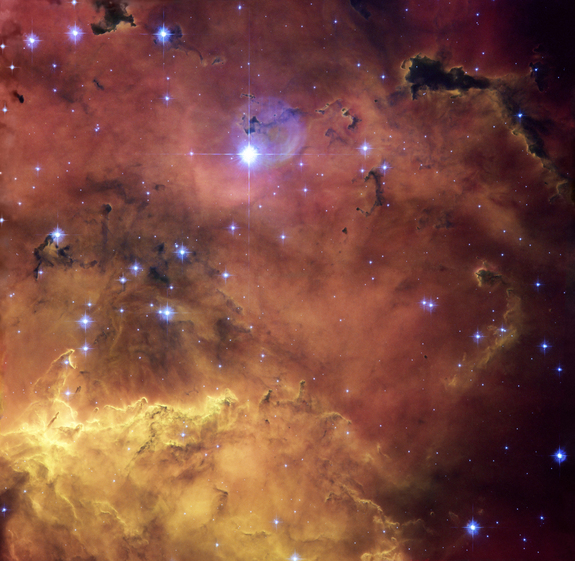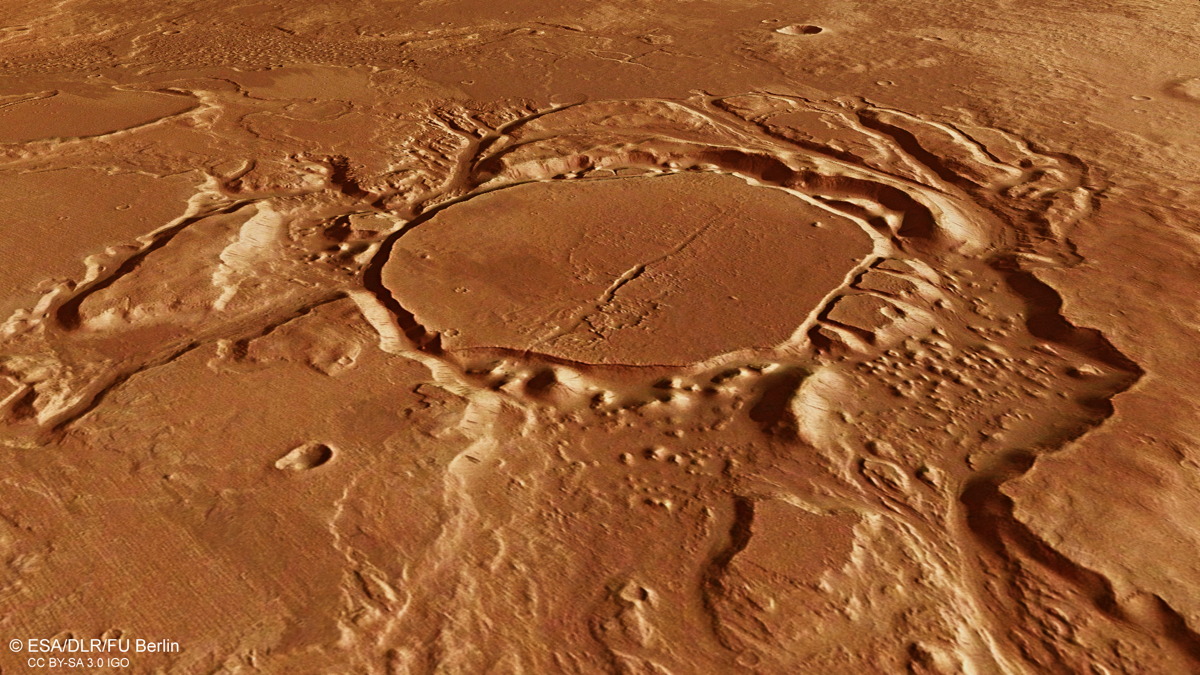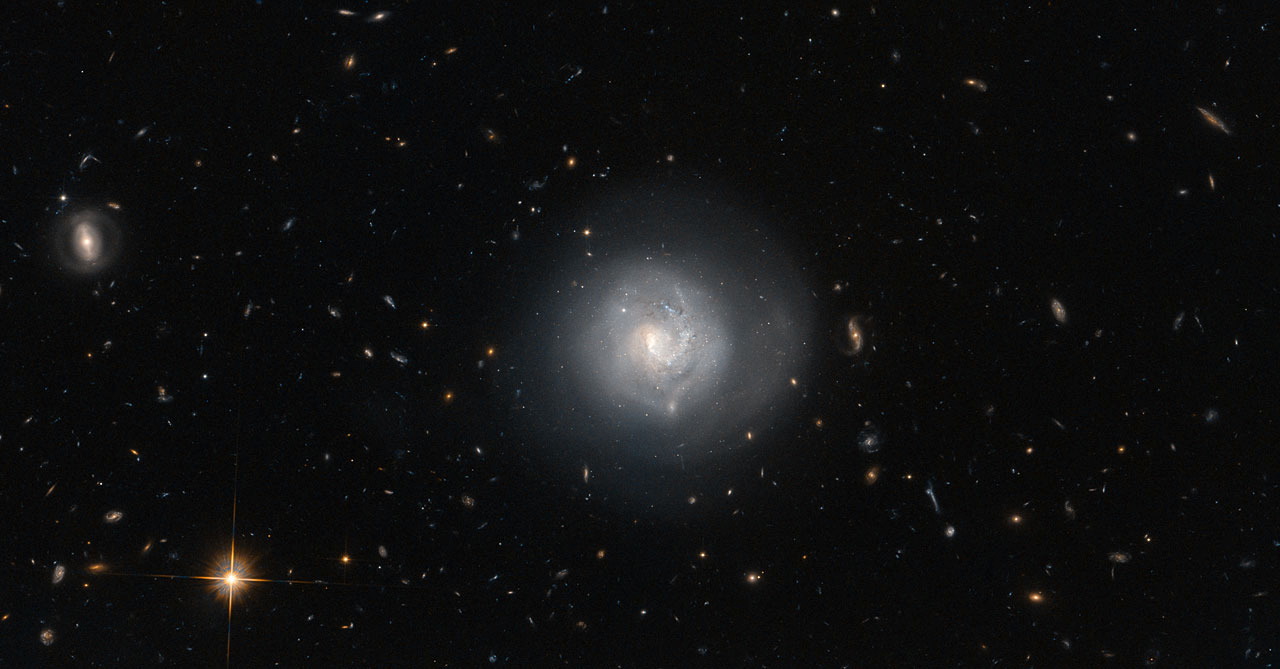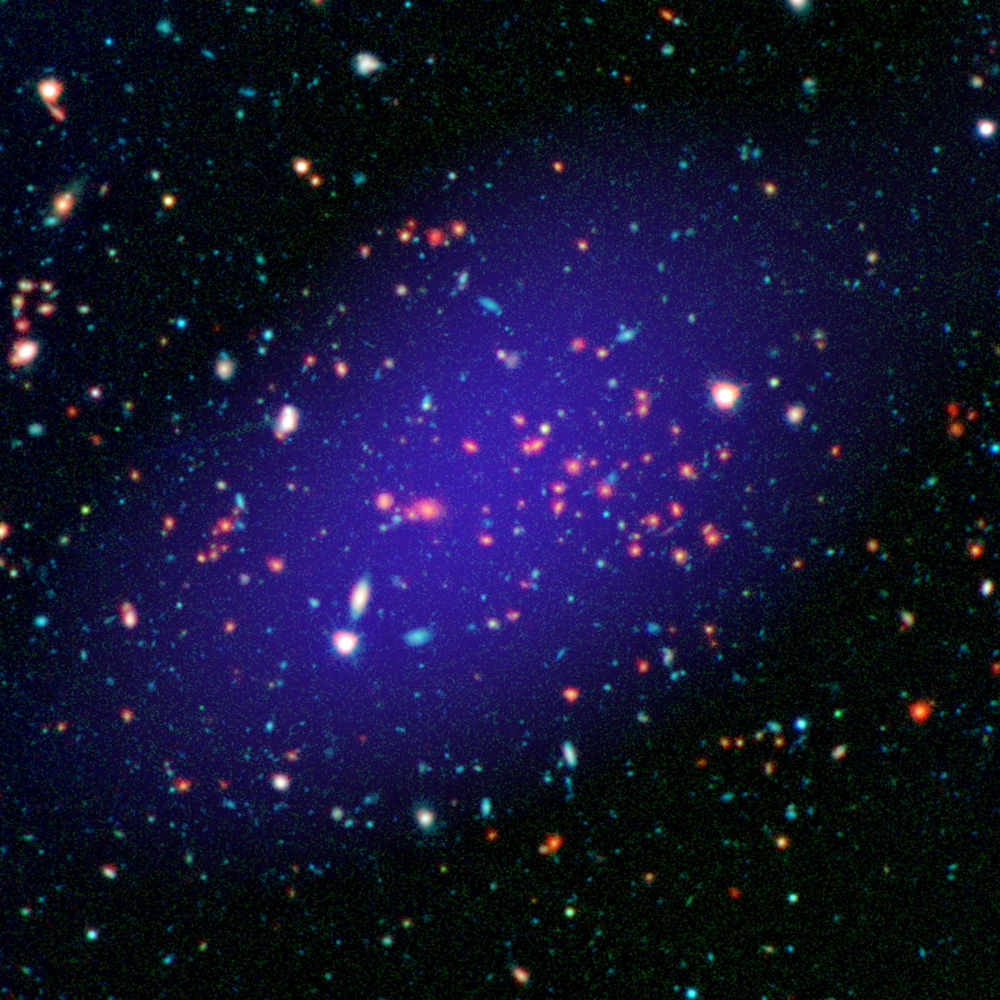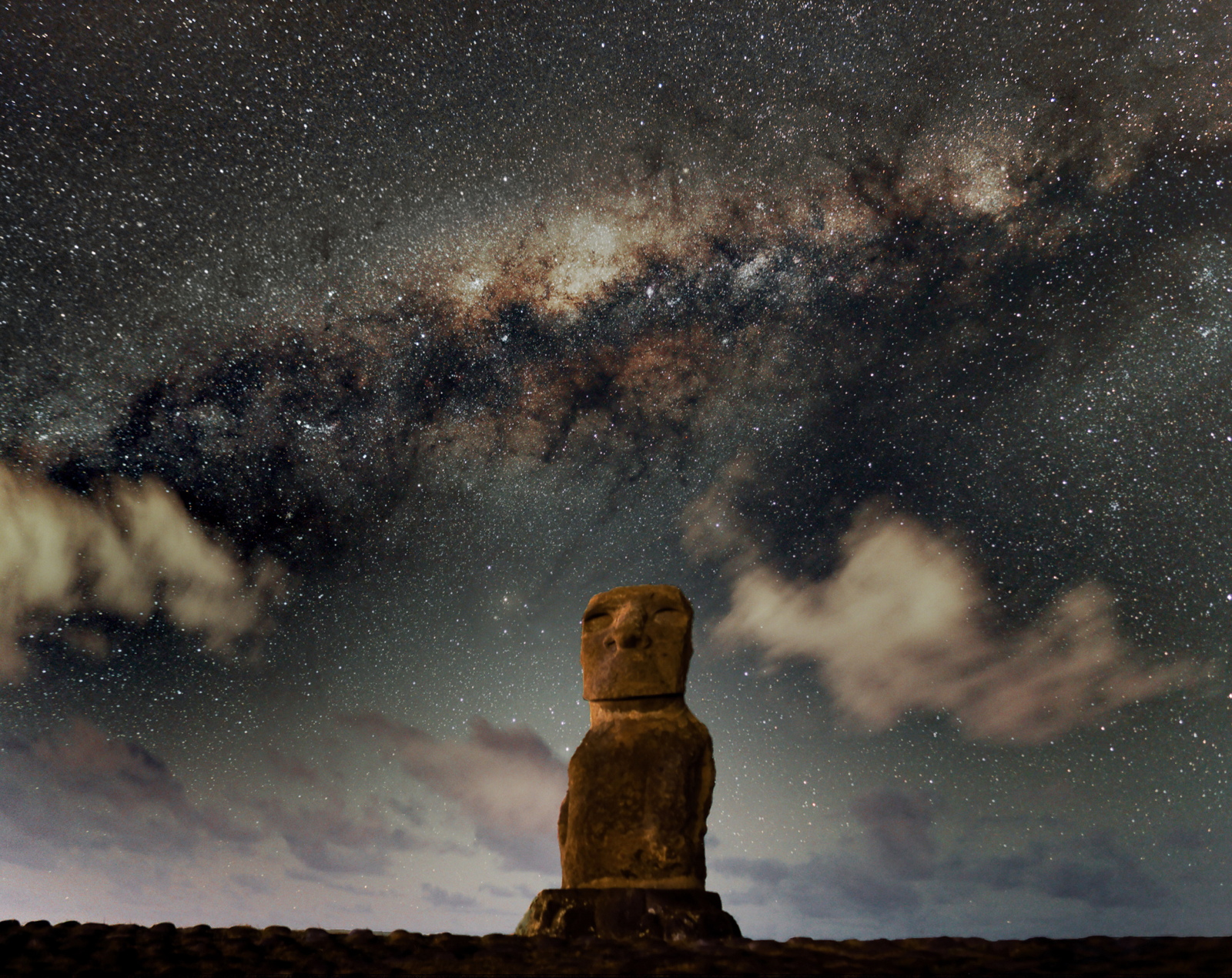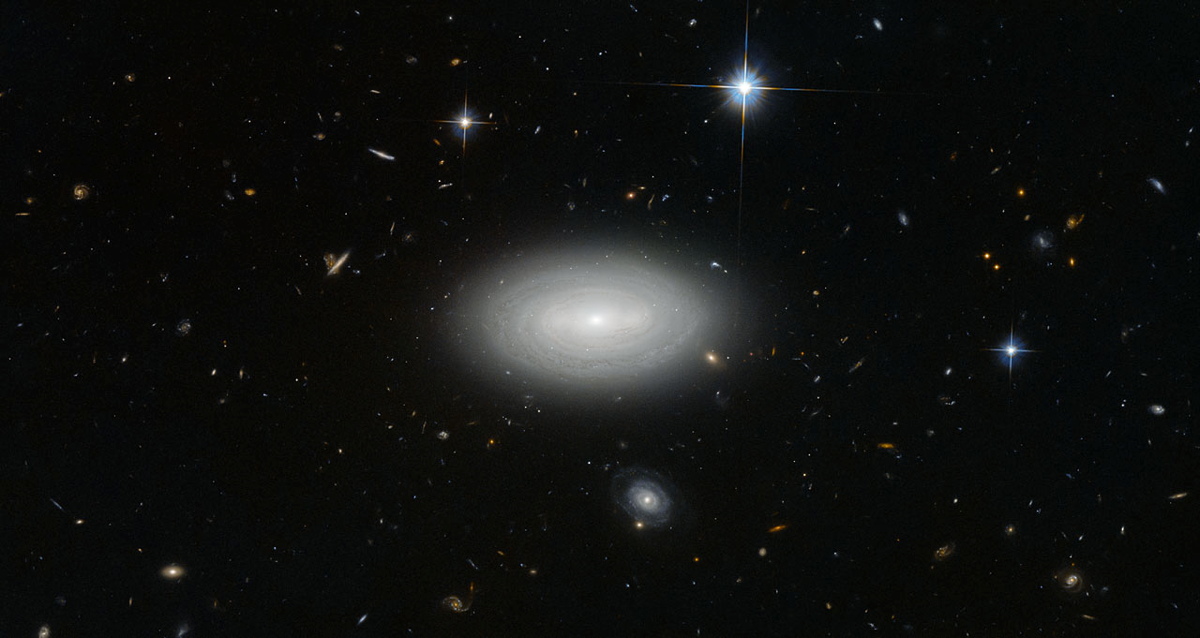Space Image of the Day Gallery (November 2015)
Image of the Day Archives
For older Image of the Day pictures, please visit the Image of the Day archives. Pictured: NGC 2467.
The Craters of Mars
Monday, Nov. 2, 2015: ESA’s Mars Express spacecraft obtained data used to make this oblique perspective view of an eroded crater in Mangala Valles region of Mars. During an intense period of flooding, water and sediments filled the crater which later eroded. Chaotic terrain then formed around it. Surrounding channels carved by flowing water also appear in the image, releaed Oct. 15, 2015.
— Tom Chao
Up on the Hill
Tuesday, Nov. 3, 2015: Sunset falls on ESO’s La Silla Observatory, above the Atacama Desert of Chile. The site stands 7900 feet (2400 meters) above sea level at the southern edge of Chile’s Atacama Desert. Far from the light pollution of human residences, it affords an unobstructed view of the night sky for ESO’s telescopes. Image released Nov. 2, 2015.
— Tom Chao
Fork in the Sky
Wednesday, Nov. 4, 2015: The galaxy Mrk 820 is classified as a lenticular galaxy, meaning it is between elliptical and spiral galaxies in shape. On the Hubble Tuning Fork, a classification system based on galaxy morphology, Mrk 820 is classed as type S0. The Hubble Tuning Fork, so-named because of the shape of the diagram, contains elliptical galaxies, smooth-blob shaped, on the “handle” of the fork, while the two “prongs” represent types of unbarred and barred spiral galaxies. Lenticular galaxies like Mrk 820 exist in the transition zone between ellipticals and spirals, lying right where the “fork” divides. (See an image of the Hubble Tuning Fork diagram.) Image released Nov. 2, 2015.
— Tom Chao
Canada Sky
Thursday, Nov. 5, 2015: Astrophotographer James Younger sent in a photo of a meteor he caught on Nov. 3, 2015, from Vancouver Island, British Columbia, Canada. He writes in an email message to Space.com: “Out shooting the auroras last night. [I] did ok with that, but caught this nice fireball. Lots of big fireballs heading in the northerly direction for the last few weeks; looking forward to more the next couple nights. Saw half-a-dozen big fireballs last night, photographing from Vancouver Island.”
— Tom Chao
Good CARMA
Friday, Nov. 6, 2015: Light departed this galaxy cluster, MOO J1142+1527, 8.5 billion years ago. The red galaxies in the center of the image form the heart of the galaxy cluster. Multi-wavelength observations combined to create this color image, including these sources: Infrared observations from NASA's Spitzer Space Telescope (red); near-infrared and visible light captured by the Gemini Observatory atop Mauna Kea in Hawaii (green and blue); and radio light from the Combined Array for Research in Millimeter-wave Astronomy (CARMA), near Owens Valley in California (purple). Along with galaxies, clusters also contain a reservoir of hot gas with temperatures in the tens of millions of degrees Celsius/Kelvin. Researchers used
Ancient Watcher
Monday, Nov. 9, 2015: Astrophotographer Brian Hancock sent in a photo of the Milky Way over a moai near Hanga Roa on Easter Island in the south Pacific Ocean, a province of Chile. He writes in an email message to Space.com: “Just wanted to share a ... [photo] from a recent trip to Chile this past October. I honestly was totally lost when I first looked up — familiar constellations like Sagittarius and Scorpius were so ‘out of place’ that I didn't recognize them at first. [This] photo is from a night of observing at a moai near Hanga Roa. It is right by the shore and clouds rolled in as the Milky Way hovered above.”
— Tom Chao
Breaking space news, the latest updates on rocket launches, skywatching events and more!
Shoot Out
Tuesday, Nov. 10, 2015: Two almost-symmetrical jets of dense gas spurt from a single source at the center of this image. The Atacama Large Millimeter/submillimeter Array (ALMA) captured this protostar, known as CARMA-7, and its jets, which lie approximately 1400 light-years from Earth within the Serpens South star cluster. At least 30 more protostars crowd this dense cluster, found in the constellation of Serpens (The Serpent), providing astronomers with excellent subjects for the study of stars interacting with their environment. The jets may be caused by periodic outbursts of gas ejected at high speed.
— Tom Chao
Lonely Is the Night
Wednesday, Nov. 11, 2015: Galaxy MCG+01-02-015 floats in space, seemingly accompanied by 3 local stars identified by the diffraction spikes radiating from them. All the other objects dotting the frame are galaxies. Despite the apparent abundance of neighbors, MCG+01-02-015, known as a void galaxy, actually floats in a vast emptiness, where only one atom exists per cubic meter. This galaxy is so far from others that if our galaxy, the Milky Way, were in a similar situation, humans would not have known of other galaxies until the 1960s.
— Tom Chao
Waiting All Night
Thursday, Nov. 12, 2015: Astrophotographer Sébastien Joly sent in a photo of a Taurid meteor captured over Lake Cerknica in Slovenia, on Nov. 10, 2015. He reports that he waited 6 hours and saw 7 meteors around the constellation of Taurus. He writes, “I’ll go back tonight, maybe more luck … “
— Tom Chao
Good Morning, Good Morning
Friday, Nov. 13, 2015: Astronaut Scott Kelly tweeted this photo from the International Space Station on Nov. 5, 2015, writing, "For an instant before sunrise, the space station glows orange. #GoodMorning from @Space_Station! #YearInSpace." He continues his one-year mission on the station, scheduled to end in March 2016.
— Tom Chao
